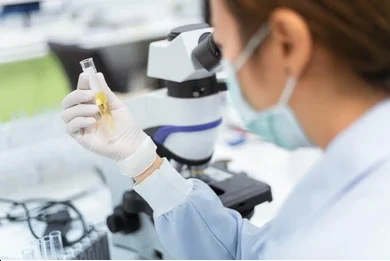
Credits: Shutterstock
Synthetic urine has come a long way from its early days as a simple laboratory solution. Today, it’s a sophisticated product with a range of applications beyond just laboratory testing. As its demand grows, innovations in synthetic urine production are pushing the boundaries of what this product can achieve. From more accurate formulations to new uses in industries like drug testing, education, and medical research, synthetic urine is continuously evolving. Here, we explore the latest innovations and future trends shaping the production of synthetic urine.
One of the most significant innovations in synthetic urine production is the improvement of formulations to closely mimic real human urine. Advanced products now replicate the specific gravity, pH levels, and chemical composition of natural urine, making them nearly indistinguishable from the real thing. This level of accuracy is crucial for applications such as calibration of urinalysis equipment, testing of diapers and hygiene products, and even scientific research.
Companies are now developing synthetic urine that contains not only urea, creatinine, and uric acid but also more nuanced components like specific proteins and hormones. This makes synthetic urine useful for testing in medical scenarios, such as the performance of diagnostic devices. Enhanced formulations also play a crucial role in applications like Quick Fix Plus, a leading synthetic urine brand that aims to offer a reliable and realistic product for various testing environments.
Another key area of innovation is temperature regulation. Real human urine is warm when it exits the body, which makes temperature a critical factor in testing scenarios, particularly for drug screenings. If the temperature of a sample doesn’t match that of fresh human urine, it can immediately raise suspicions. To address this, manufacturers are integrating advanced heating elements and thermal regulation solutions into their products.
Some synthetic urine kits now come with temperature strips, heating pads, or battery-powered devices that maintain the urine sample at a body-like temperature. These technological enhancements are designed to keep the sample at an optimal temperature for hours, improving its chances of passing authenticity checks.
As the world becomes more environmentally conscious, synthetic urine manufacturers are seeking sustainable ways to produce their products. Traditional production methods often involve chemicals that are harmful to the environment. However, many companies are now exploring eco-friendly alternatives, such as using biodegradable packaging and reducing waste in the manufacturing process.
Additionally, some manufacturers are focusing on developing synthetic urine products that require fewer resources to produce while maintaining high standards of quality and authenticity. By embracing green chemistry principles, companies can reduce their carbon footprint and contribute to global sustainability goals.
While synthetic urine has traditionally been associated with drug testing and laboratory research, new applications are emerging across a range of industries. In the medical field, for instance, synthetic urine is being used for training purposes. Medical students and healthcare professionals can use synthetic urine to practice diagnostic tests without any ethical concerns.
In the environmental sector, synthetic urine is also gaining traction. For example, it can be used to test the effectiveness of wastewater treatment plants without contaminating real samples. In agriculture, synthetic urine serves as a controlled medium for testing soil and fertilizer interactions, helping researchers develop better farming practices.
Looking ahead, the future of synthetic urine production may involve the integration of artificial intelligence (AI) and machine learning. AI could help in creating more personalized synthetic urine products, tailored to specific needs or applications. For example, AI algorithms could analyze large datasets from urinalysis to develop formulations that mimic the urine profiles of different demographics or health conditions.
Furthermore, advancements in biotechnology could enable the creation of synthetic urine that changes composition in real-time, simulating the effects of various biological processes. This could open up new possibilities in medical training, diagnostic tool development, and even therapeutic research.
The innovations in synthetic urine production reflect a growing need for more accurate, reliable, and versatile solutions. As technology continues to advance, we can expect even more sophisticated formulations, improved temperature regulation, and broader applications in fields beyond just laboratory testing. Whether it’s for medical training, environmental testing, or ensuring the reliability of diagnostic tools, synthetic urine is proving to be an essential tool with a bright future ahead.
Copyright © 2024 California Business Journal. All Rights Reserved.
Many adults tend to shelve the idea, associating it with adolescence regarding orthodontic treatment. Yet,…
Vocational rehabilitation services are a lifeline for individuals who face employment barriers due to physical,…
Benzodiazepines are used to reduce symptoms of anxiety and have a calming effect on the…
In today’s globalized world, effective communication across languages is crucial. Whether you're a business expanding…
Many people are trying to lower their carbon footprint today, but reducing a business's environmental…
Identifying transmission issue symptoms early can significantly enhance the longevity and performance of your vehicle.…